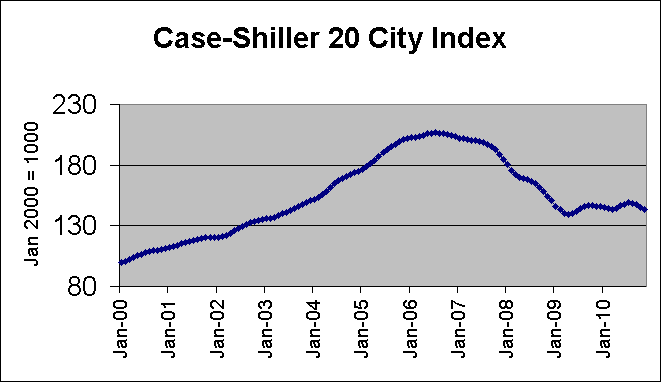February 21, 2011
The Washington Post, which completely missed the $8 trillion housing bubble whose collapse wrecked the economy, is still having a hard time understanding house prices. It notes that the Case-Shiller 20-City index is a moving average of sales closings for the prior three months. And, there is typically a 6-8 week period between when a contract is signed and when it closes. It therefore tells readers that the December data to be released on Tuesday:
“should reflect the autumn lull in the economy. The question is whether the improved economic outlook over the past few months will translate into a firming up of home prices in early 2011.”
Actually no. Short-term ups and downs in the economy will not be reflected in house prices. The main factor pushing house prices lower right now is the end of the homebuyers tax credit. This credit, which could be used for homes contracted before April 30th (and likely closed before the end of June) pulled many sales forward from the second half of 2010 and even 2011 into the first half of the year. Prices began to fall as soon as the credit ended.
It is easy to see from the data that the credit was driving the housing market, not short-term economic fluctuations. House prices stopped falling and actually rose somewhat in the second half of 2009, a point where the economy was still losing jobs, as people rushed to buy homes before the expiration date of the initial credit in November of 2009.

The main factor in the housing market is the further deflation of the housing bubble. People who understand the housing market expect prices to continue to drop until the bubble is deflated. This means a price decline of another 10-15 percent over the next year.







Comments